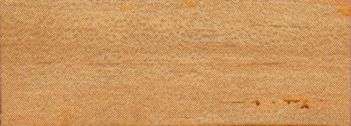
Resak (Vatica heteroptera)
Family: Dipterocarpaceae
Common names: Resak, Resak gunong
Distributed in: Malaysia (Oceania and S.E. Asia)
Common uses: Heavy construction, Light construction
Environment profile: Vulnerable
Tree size: Trunk diameter is 150-200 cm
Colors: the heart isReddish brown, Whiteand the sapwoodRed, White.The grain isStraight, the textureMediumand the lusterMedium
Natural durability: Resistant to attack from pinworms (ambrosia beetles), Susceptible to insect attack
Kiln Schedules: Dry at a slow speed
Kiln Drying Rate: Slow
Drying Defects: Internal Honeycombing Possible, Splitting
Ease of Drying: Thick Stock Requires Care
Blunting Effect: Little
Boring: Fairly easy to very easy
Carving: Fairly Easy to Very Easy
Cutting Resistance: Easy to saw
Gluing: Fairly Easy to Very Easy
Mortising: Fairly Easy to Very Easy
Moulding: Fairly Easy to Very Easy
Movement in Service: Fairly Easy to Very Easy
Nailing: Fairly Easy to Very Easy, Very Good to Excellent
Planing: Very Good to Excellent
Resistance to Impregnation: Permeable sapwood
Response to hand tools: Responds Readily
Routing recessing: Fairly Easy to Very Easy
Sanding: Very Good to Excellent Results
Veneering qualities: Veneers easily, Veneers moderately easy
Steam bending: Unsuitable
Screwing: Fairly Easy to Very Easy, Very Good to Excellent Results; Turning: Very Good to Excellent Results
Painting: Fair to Good; Polishing: Very Good to Excellent; Staining: Very Good to Excellent; Varnishing: Very Good to Excellent;
- Numerical data Metric
- Numerical data English
- Strength properties
- References
 |
 |
 |
 |
| Item |
Green |
Dry |
Metric |
| Specific Gravity |
|
|
|
| Density |
|
817 |
kg/m3 |
| Bending Strength |
|
|
kg/cm2 |
| Crushing Strength |
|
|
kg/cm2 |
| Hardness |
|
|
kg |
| Impact Strength |
|
|
cm |
| Shearing Strength |
|
|
kg/cm2 |
| Stiffness |
|
|
1000 kg/cm2 |
| Tangential Shrinkage |
|
|
% |
| Radial Shrinkage |
|
|
% |
| Weight |
|
|
kg/m3 |
| Maximum Load |
|
|
cm-kg/cm3 |
| Toughness |
|
|
cm-kg |
| Static Bending |
|
|
kg/cm2 |
|
 |  |  |  | | Item | Green | Dry | English | | Density | | 51 | lbs/ft3 | | Weight | 50 | 40 | lbs/ft3 | |
Density (dry weight) = 61-67 lbs/cu.ft
Density (dry weight) = 53-60 lbs/cu. ft
Density (dry weight) = 46-52 lbs/cu. ft.
Density (dry weight) = 38-45 lbs/cu. ft.
Chudnoff, M.,1984,Tropical Timbers of the World,U.S.A. Department of Agriculture, Forest Service, Forest Products,Laboratory, Madison.Desch, H.E.,1954,Manual of Malayan Timbers (2 vols,Malayan Forest Records,no.15Fundter, J.M.,1982,Names for Dipterocarp timbers and trees from Asia,Pudoc, Wageningen, NetherlandsSymington, C.F.,1943,Foresters manual of Dipterocarps,Malaysia Forest Record,No.16
| 







